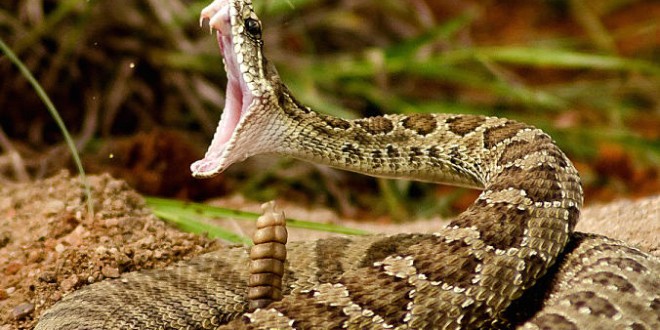Pennsylvania – Rare fatal rattlesnake bite claims life of camper in Elk County.
Russell E. Davis, 39, of Freedom died early Sunday after he was bitten during a camping trip with his girlfriend in Elk County.
He was putting wood on a campfire shortly before midnight Saturday at his family’s camp in Medix Run, about 125 miles northeast of Pittsburgh, when he was bitten by a rattlesnake, according to Armstrong County Coroner Brian K. Myers.
“He went running into the camp and told his girlfriend to take him to a hospital,” Mr. Myers recounted, based on his interview with the woman.
While en route, Mr. Davis began to have severe breathing problems, Mr. Myers said. The woman stopped at a local tavern for help. An ambulance was summoned and CPR was begun, Mr. Myers said.
In all, about 30 minutes had elapsed by the time an ambulance arrived, the coroner said. Mr. Davis then was transported to Penn Highlands Health Care in St. Marys, Elk County, where he already was in “acute respiratory distress,” Mr. Myers said.
The coroner was told by Penn Highlands personnel that an anti-venom treatment was given before Mr. Davis was put in a medical helicopter so he could be transported to a Pittsburgh hospital for additional treatment.
But, before he could reach Pittsburgh, he went into full cardiac arrest and the helicopter landed at ACMH Hospital in Kittanning, Armstrong County. He was pronounced dead at 5:23 a.m. before any treatment could be given, Mr. Myers said.
Chance encounters with rattlesnakes are called “rare” by the Pennsylvania Department of Conservation and Natural Resources.
On its website, the agency states: “There have been no deaths in Pennsylvania attributable to timber rattlesnake bites for at least the past 25 years.”
Timber rattlesnakes are the most common of two types of rattlesnakes found in Pennsylvania. The second type, the massasauga, is concentrated in only two areas: Venango and Butler counties.
Ray Bamrick, the lead reptile keeper for the Pittsburgh Zoo and PPG Aquarium since 1995, said he never has heard of a fatal venomous snakebite in this region. The cure for a poisonous snakebite is anti-venom, which is kept in stock at many hospitals, he said.
Mr. Myers ruled the cause of Mr. Davis’ death as anaphylactic reaction to a venomous snakebite and ruled it an accident. No autopsy will be performed.
According to the federal Centers for Disease Control and Prevention, between 7,000 and 8,000 people receive a venomous snakebite annually and about five of those people die.
Mr. Bamrick said precautions are taken at the zoo to protect against life-threatening snakebites, ranging from always notifying other staff members when he is working with a venomous snake to ensuring that his colleagues know how to respond if someone ever would be a victim of a potentially life-threatening snakebite.
Essentially, aside from laying the victim down and attempting to position the bite wound below the level of the patient’s heart, the treatment entails getting a patient to a medical facility where anti-venom can be administered as quickly as possible.
“You don’t use constriction bands or tourniquets. You don’t cut the wound and try to suck out the venom. … You want to notify EMS and get to a hospital,” he said.
Agencies/Canadajournal
 Canada Journal – News of the World Articles and videos to bring you the biggest Canadian news stories from across the country every day
Canada Journal – News of the World Articles and videos to bring you the biggest Canadian news stories from across the country every day



